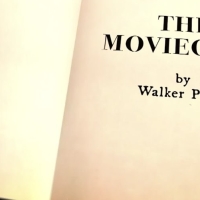The first section of Citizen combines numerous racist encounters that are often overlooked by society into one chapter.
We read about memories through second-person point of view. This invites the reader to experience the memories first hand rather than at a distance. These are particularly interesting, since they give the reader a sense of otherness from the start of the novel.
If one were to merely glance, these interactions would seem to be simple misunderstandings. Without the connection on the instances, it would seem that being called by the wrong name or having a friend mistaken for a thief outside of their home would be accidental mistakes. By connecting these memories into a large cohesive piece, we see that these are not “simple misunderstandings”.
This is in fact, a form of racism often overlooked by society.It is important to note Rankine’s use of white space throughout the first section.

This white space shows her exhaustion with the racism that occurs in day-to-day life. From one incident to the next, the white space shows her exhaustion of having to deal with it.
Along with her use of white space, the first image the reader sees is the Jim Crow Road sign placed on top of a backward stop sign in a residential neighborhood.
The line preceding it:
The route is often associative (5).
The picture appears shortly after this to demonstrate this point. It looks to be an innocent scene at first glance. The Jim Crow Road sign tells everyone where they are and where they need to be. Depending on the person’s race, the destination will be different according to the Jim Crow laws that forced segregation.
The most surprising act of racism in the first section is when the narrator participates in it.
The narrator is on a date with their loved one when they receive a call from their neighbor about a “menacing black guy” which they state is their friend that the neighbor had met earlier. However, the police have been called.
Shortly after they arrive home, the situation has been cleared up. Explaining that it was all a misunderstanding, they feel somewhat responsible for what their neighbor has done.
They tell their friend,
…the next time he wants to talk on the phone he should just go in the backyard (15).
This is a powerful moment because it shows that these microaggressions occur within people of color and people of privilege.
The last act of racism in the first section of the book happens when meeting a therapist who specializes in trauma.
The narrator tries Itto enter through the way that they are told, only to discover that the door is locked. They proceed to go to the front yard, where they are greeted by someone after ringing the doorbell. The exchange follows,
It’s as if a wounded Doberman pincher or a German shepard has gained the power of speech. And though you back up a few steps, you manage to tell her you have an appointment. You have an appointment? she spits back. Then she pauses. Everything pauses. Oh, she says, followed by, oh, yes, that’s right. I am sorry.
I am so sorry, so, so sorry (18).
The exchange is immediately followed by an image.
A sculpture of an innocent animal, with the face of a human demonstrates how the

narrator feels through this exchange.
This combination of human and animal elicits the
image of prey, wounded and scared. They are hurt by the actions of others.
Through the many interactions of the first section, the reader is able to connect the incidents together to form the overall racism that has been dealt with daily as far back as the narrator can remember.
This racism is harder to detect than derogatory slurs. It also invites others to take part in these aggressive acts. These compile over time, causing those effected to feel as if they are under constant attack. By showing the acts of intentional and unintentional racism, Rankine awakens the readers to injustices occurring around them.


